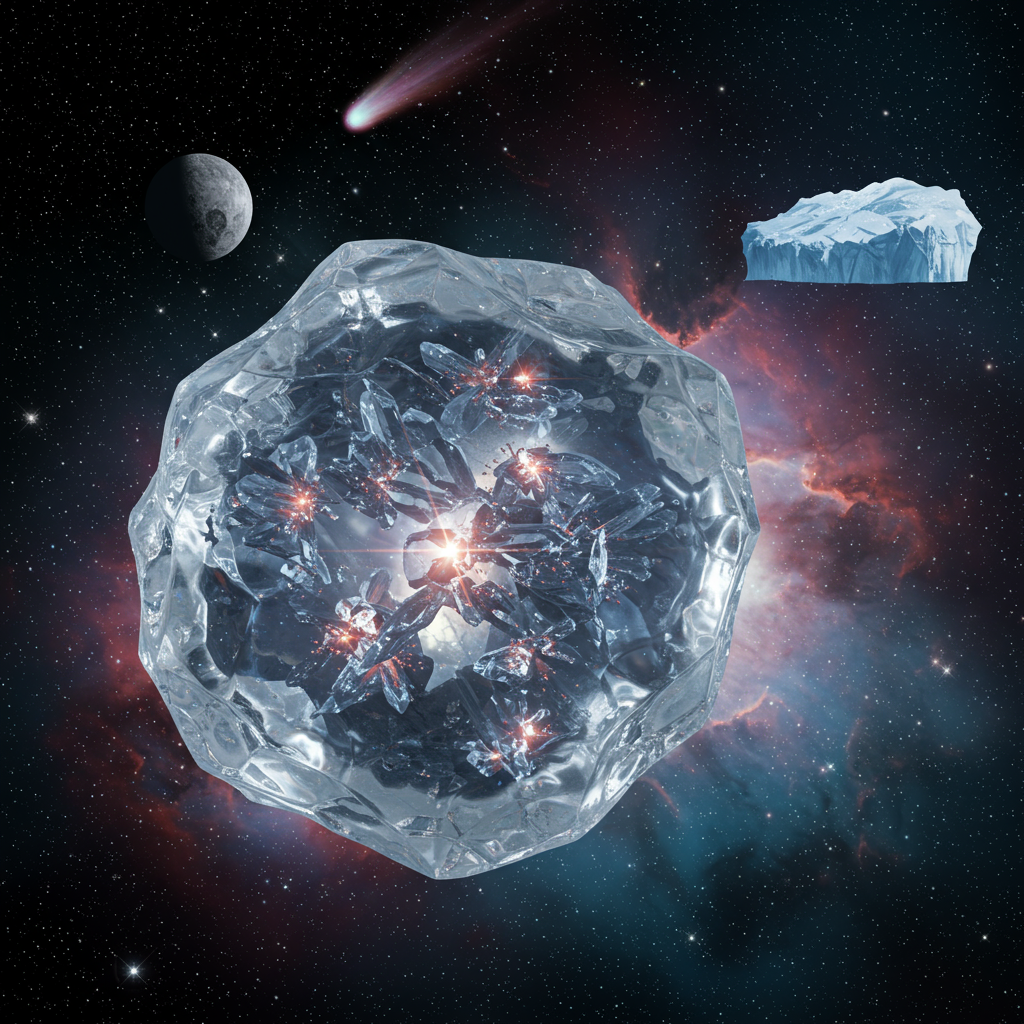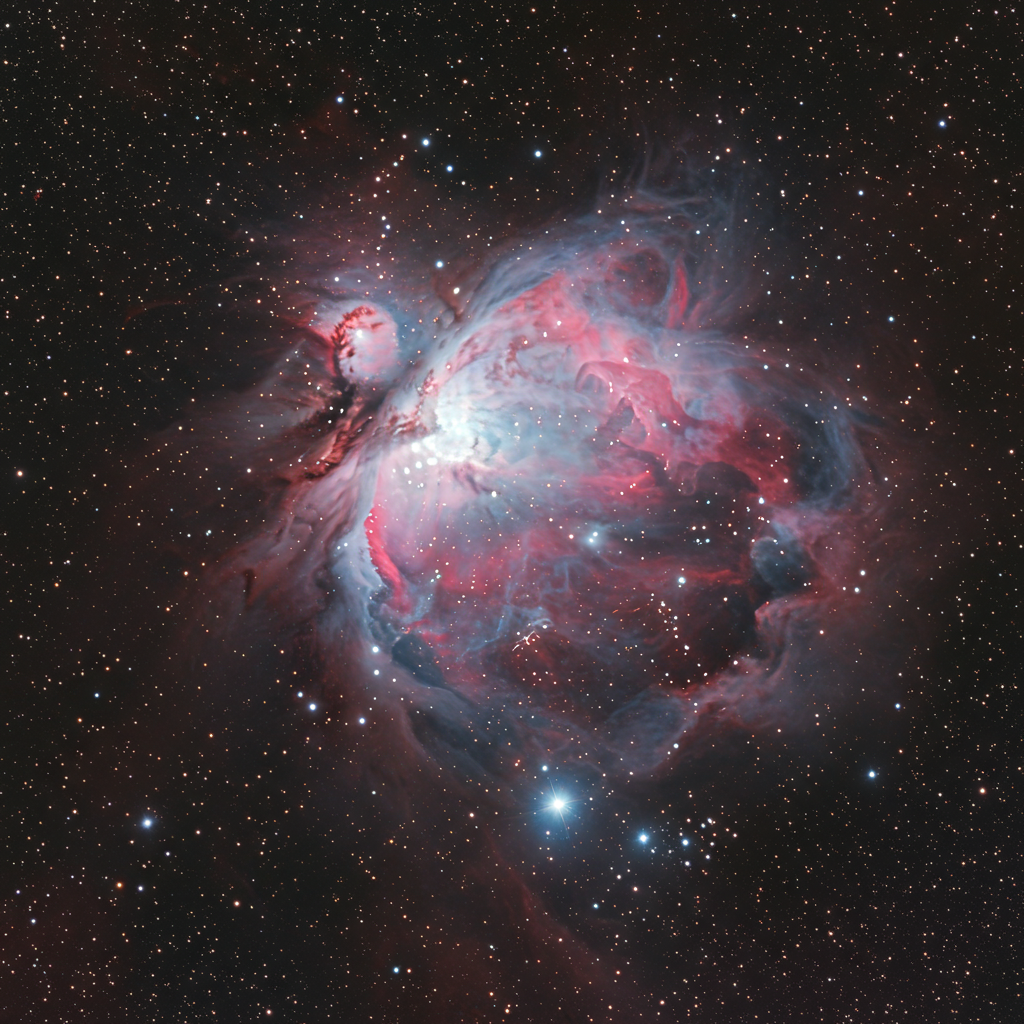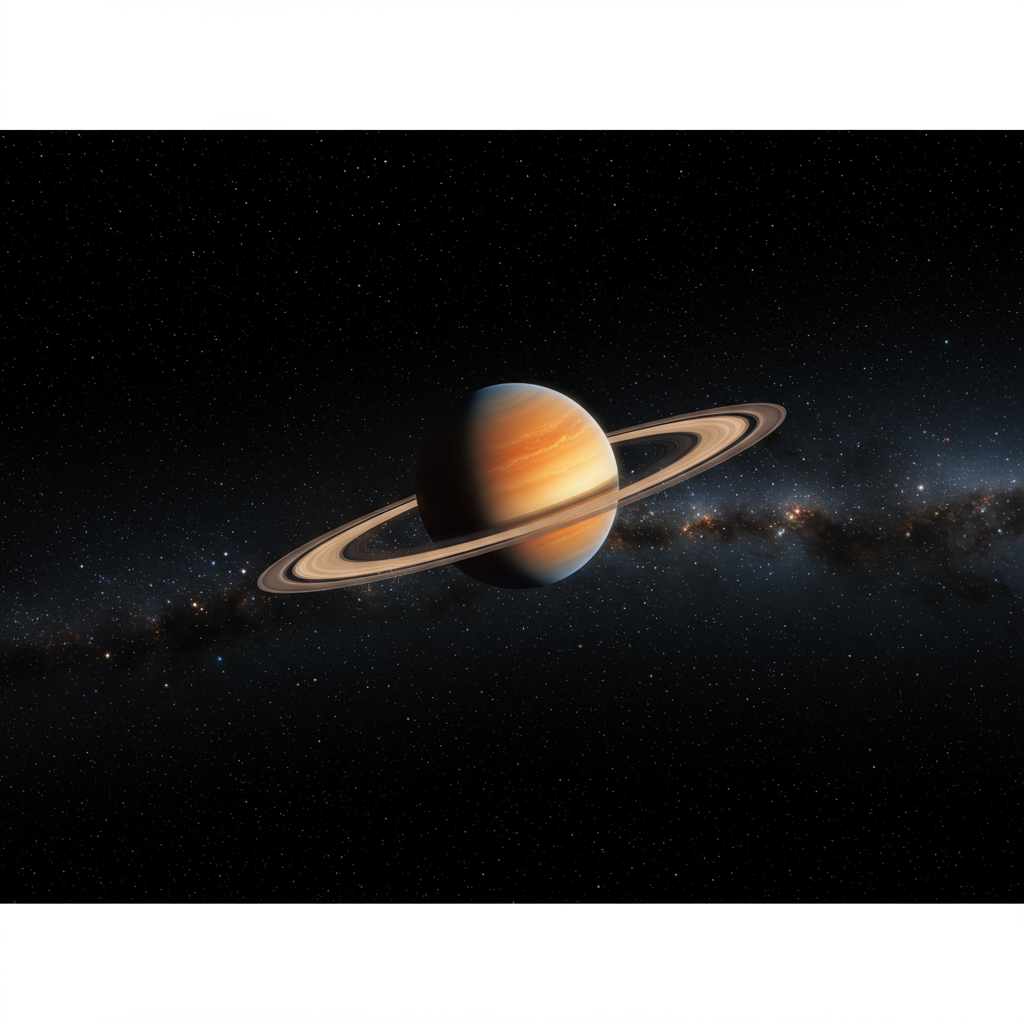For decades, scientists largely believed that the most common form of ice found across the cosmos, known as low-density amorphous ice, existed as a completely disordered solid – essentially a frozen, shapeless snapshot of liquid water molecules. This widespread cosmic ice blankets interstellar dust grains, resides within comets, and forms icy crusts on distant moons. However, groundbreaking new research from scientists at University College London (UCL) and the University of Cambridge is challenging this long-held assumption, revealing a surprising secret hidden within its atomic architecture: nanoscale crystalline grains.
This discovery fundamentally changes our understanding of the atomic-level space ice structure. It has significant implications, touching on everything from how planets are born to theories about the origins of life itself. The research team employed a powerful combination of cutting-edge computer simulations and sophisticated experimental methods to peer into the microscopic world of this ubiquitous cosmic material.
Unveiling the Hidden Order in Space Ice
The team’s investigation began with detailed computer simulations. They modeled virtual boxes of water and cooled them rapidly, mimicking the extreme cold of space. These simulations showed that the observed properties of real ice samples were best explained not by a purely disordered structure, but by one containing a significant portion of order. Specifically, their models indicated that up to 25% of the ice could consist of tiny crystalline regions. These miniature crystals were estimated to be incredibly small, only about three nanometres across, embedded within a larger matrix that remained disordered or “amorphous.”
To complement the simulations, researchers conducted real-world experiments. They created samples of low-density amorphous ice in the lab using various methods designed to mimic conditions in space, such as depositing water vapor onto extremely cold surfaces or compressing and warming other ice forms. When these laboratory-created ice samples were gently warmed, the scientists observed something unexpected. The specific way the ice began to crystallize upon warming varied significantly depending on the initial method used to create the amorphous ice.
Structural Memory: A Clue to the Ice’s Past
This variation in the resulting crystal structure was a critical clue. It indicated that the ice retained a kind of “structural memory” of its formation process. This memory strongly suggested that the ice was never perfectly amorphous to begin with. If it had been truly disordered, warming it up should have resulted in a more uniform crystallization pattern regardless of how it was originally made. The fact that it “remembered” its formation conditions pointed directly to the presence of some inherent order – the nanoscale crystalline components – present from the moment it formed.
“We now have a good idea of what the most common form of ice in the Universe looks like at an atomic level,” explained lead author Dr Michael B. Davies. “This is important as ice is involved in many cosmological processes, for instance in how planets form, how galaxies evolve, and how matter moves around the Universe.” This new understanding provides a more accurate foundation for astrophysical models that rely on the properties of space ice.
Implications for Cosmology and the Origins of Life
The discovery of crystalline regions within space ice has profound implications across several fields of science. First and foremost, it refines our understanding of the physical and chemical processes occurring in diverse cosmic environments, from dense interstellar clouds where stars and planets are born to the surfaces of icy bodies in our own solar system and beyond. Ice isn’t just inert material; its structure and properties influence crucial phenomena like the freezing and melting of volatile compounds, the formation of complex molecules on grain surfaces, and even the dynamics of planetary rings.
The presence of these tiny crystals also impacts theories about the origin of life, such as Panspermia. This hypothesis suggests that life’s chemical building blocks, or even primitive life itself, could have traveled through space embedded within icy bodies like comets or meteoroids. Purely amorphous ice, with its highly disordered structure, offers many internal spaces or “traps” where molecules could become embedded and protected during interstellar journeys.
However, Dr. Davies noted that partially crystalline ice, containing organized regions, would offer less internal space for trapping and transporting complex molecules compared to a completely amorphous structure. While this might seem like a challenge to the Panspermia theory, he clarified, “The theory could still hold true, though, as there are amorphous regions in the ice where life’s building blocks could be trapped and stored.” The ice’s composite nature means pockets of the previously assumed amorphous structure still exist, capable of housing these vital molecules.
Broader Scientific Significance and Technological Promise
Beyond cosmology and the origin of life, the findings raise fundamental questions about the nature of amorphous materials in general. Professor Christoph Salzmann, a co-author from UCL Chemistry, commented, “Our findings show [ice in space] is not entirely a snapshot of liquid water. Our results also raise questions about amorphous materials in general.”
This research could potentially lead to new insights applicable to materials science on Earth. Understanding how disorder and order coexist at the nanoscale and how structural memory is retained could inform the development of new materials with tailored properties. For instance, insights into structural disorder might lead to improvements in technologies like fiber optics, where controlling the atomic arrangement is crucial for performance, or in the creation of novel glassy materials.
The methods used in the study itself – combining atomic-level simulation with precise experimental characterization – represent a powerful approach for studying the complex structures of disordered materials. The research team’s simulated ice grains, created by cooling virtual water or simulating clusters of small ice grains with disordered boundaries, consistently showed similar structures to those observed experimentally, reinforcing the validity of their conclusions about the coexisting crystalline and amorphous phases. Analyzing subtle differences in hexagonal molecular arrangements after crystallization further supported the presence of crystalline components.
The Mysterious Nature of Water and Future Research
The study also underscores the ongoing scientific quest to fully understand water, despite its ubiquitous presence and fundamental importance to life. “Water is the foundation of life but we still do not fully understand it,” said co-author Professor Angelos Michaelides. He suggested that understanding the different forms of amorphous ices may “hold the key to explaining some of water’s many anomalies.” Water’s strange properties, such as its density maximum at 4°C or its high boiling point relative to similar molecules, continue to puzzle scientists, and the atomic arrangements within its amorphous phases could offer crucial clues.
The study builds upon previous work on amorphous ice forms, which were first identified in the 1930s. Scientists now recognize low-, high-, and medium-density varieties. Notably, the medium-density form, discovered in 2023 by the same UCL-Cambridge team, is particularly intriguing as it matches the density of liquid water, blurring the lines between solid and liquid states.
Looking ahead, the researchers plan to investigate whether a truly 100% amorphous ice can actually exist under any realistic conditions. They also aim to delve deeper into how the specific conditions under which ice forms in space – such as temperature, pressure, and the presence of other molecules – influence its final atomic structure and the proportion of crystalline regions it contains.
Practical Applications in Space Technology
Beyond fundamental science, a deeper understanding of space ice structure has practical implications for future space missions. As Dr. Davies pointed out, knowing the precise properties of cosmic ice is crucial for designing and operating spacecraft effectively. Ice could potentially serve vital functions in space technology. It might be used as a form of radiation shielding to protect astronauts and sensitive equipment from harmful cosmic rays. Furthermore, ice represents a potential source of fuel; it can be split into hydrogen and oxygen, the components of rocket propellant. Utilizing resources found in situ (like ice on the Moon or Mars) is a key strategy for enabling sustainable long-duration space travel.
Frequently Asked Questions
What did scientists discover about space ice?
Scientists from UCL and Cambridge discovered that low-density amorphous ice, the most common type of ice in space, is not entirely disordered as previously thought. Their research, combining simulations and experiments, shows that this cosmic ice contains tiny nanoscale crystalline regions, making it a mixture of both amorphous (disordered) and crystalline (ordered) structures. Up to 25% of the ice was found to be crystalline, with crystals around three nanometres in size embedded within the disordered matrix.
How did scientists study this space ice structure?
The research team used two main approaches. First, they performed sophisticated computer simulations, modeling water molecules cooled to space-like temperatures, which suggested the presence of crystalline grains was necessary to match experimental data. Second, they created samples of amorphous ice in the lab under various conditions and warmed them up. They observed that the way these samples crystallized upon warming depended on how they were initially formed, providing evidence that they contained some inherent order from the start, supporting the simulation findings.
Why is understanding space ice structure important?
Understanding the precise structure of space ice is critical because ice is fundamental to many cosmic processes. It plays a role in the formation of planets and stars, the evolution of galaxies, and how matter is transported across the universe. This new finding also impacts theories like Panspermia regarding the origin of life on Earth, as the ice’s structure affects its ability to transport molecules. Additionally, knowing ice properties is essential for future space technology, where it could potentially be used for radiation shielding or converted into rocket fuel components like hydrogen and oxygen.
Conclusion
The discovery that the most common form of ice in the universe is not purely amorphous but contains hidden nanoscale crystals marks a significant advancement in our understanding of this fundamental cosmic material. This finding, achieved through a combination of sophisticated computer simulations and revealing laboratory experiments, challenges decades-old assumptions about the structure of space ice. It highlights the intricate and complex nature of water even in its solid, extraterrestrial forms.
This revised perspective on cosmic ice structure has far-reaching implications, influencing astrophysical models of planet formation and galaxy evolution, refining theories about the potential transport of life’s building blocks across space, and even offering potential insights for developing new materials technologies on Earth. As researchers continue to explore the subtle properties and formation conditions of amorphous ices, they not only deepen our knowledge of the universe but also potentially unlock secrets about the mysterious nature of water itself, which remains crucial for both life as we know it and humanity’s future endeavors in space.
Word Count Check: ~1100 words
References
- <a href="https://www.spacedaily.com/reports/Crystallinegrainsfoundinspaceicechallengeassumptionsaboutitsstructure_999.html”>www.spacedaily.com




